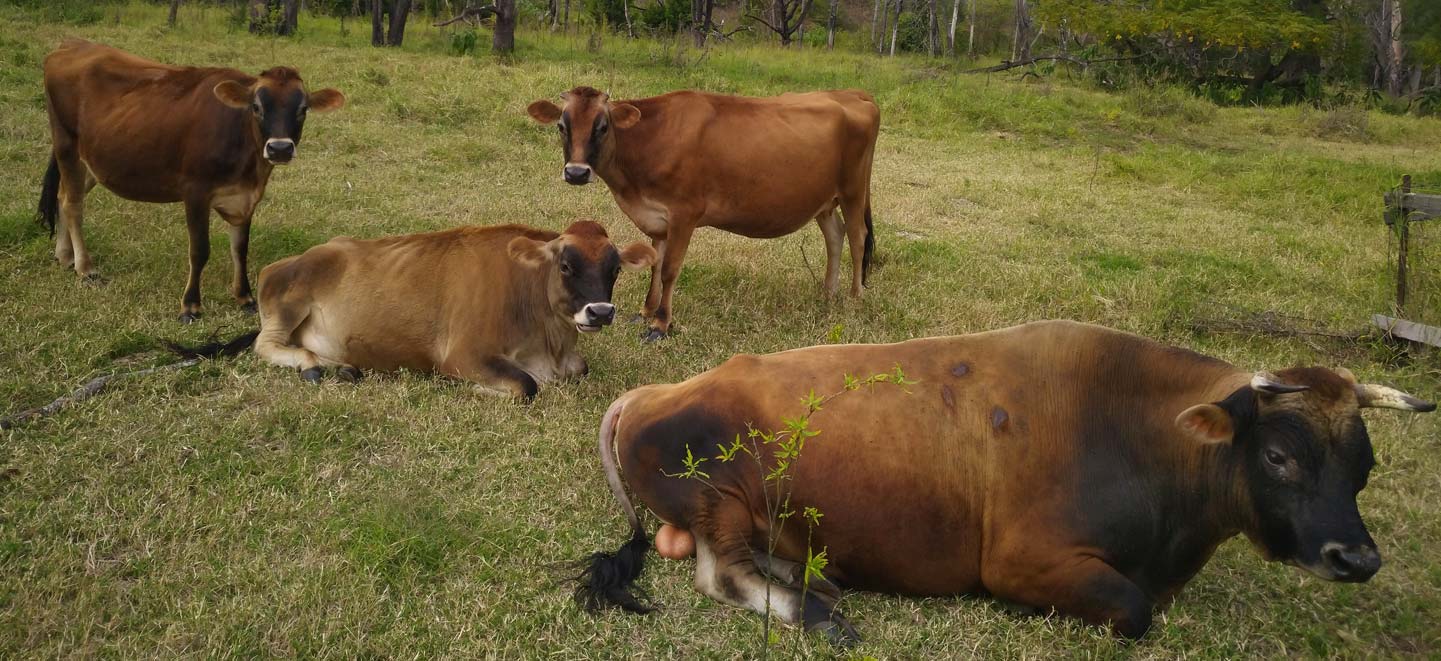Just recently, it has been brought to the forefront of my mind, the falling popularity of having a house cow. Obviously, if you don’t have the room there is no option for a cow, but within the group of those who have the circumstances to house a cow, it is becoming a less attractive option.
Due to this and my preoccupation with our own small dairy herd, I have put together a few thoughts on the subject.
In this era of climate change drama and the much-trumpeted line that “cows are killing the earth” it is hard to see past the hyperbole to some simple truths.
In second and third-world countries, having a milk cow can make the difference between sickness and health, poverty and comfort and children being mentally able. There has been a study done in Kenya, in which four groups of children were given a food supplement every day. Either 60gms meat, 1 cup milk, 1 cup vegetable oil and a control group that received no supplements. Of all the groups, those given the meat performed the best, they gained more weight, increased upper arm muscle strength by up to 80% and scored higher on intelligence tests. This group also seemed happier and more involved in the world around them.
(see more at https://www.nature.com/news/2005/050221/full/news050221-5.html or https://www.westonaprice.org/health-topics/caustic-commentary/caustic-commentary-spring-2019/#gsc.tab=0 )
This particular study was done on undernourished children, but it shows how important these easily digested animal products can be in the human diet.
In 16th century England when you could graze a cow on the commons, even poor families had access to nutritious meat and milk as well as dairy products such as cheese. This was made with rennet which was obtained from the stomach of a calf after being slaughtered for veal. This would have been essential to preserve the milk for future consumption. But after the dissolution of the monasteries, common land belonged to the king and the common man no longer had a place to graze his cow. This must have led to a degree of widespread nutritional deficiencies in the peasant community. Since 1536, when the dissolution of the monasteries happened, through to 1650 when the last black plague was recorded in London, it can only be guessed how many people died due to undernutrition because of the removal of the dairy cow from their lives and diets.
I am the first to acknowledge that milking cows is a regular, time-consuming job, that requires you to give up some of your possible social life and get very close to a cow. But the good things you can get out of a dairy cow are astounding. Not only can you enhance your social life by sharing gastronomic delights with friends and family, share a glass of wine over some really superb cheese, but also enhance your gut biome and bone density at the same time.

I can’t say it better than the Weston A Price Foundation on their website…
“…Real Milk–full-fat, unprocessed milk from pasture-fed cows contains vital nutrients like fat-soluble vitamins A and D, calcium, vitamin B6, B12, and CLA (conjugated linoleic acid, a fatty acid naturally occurring in grass-fed beef and milk that reduces body fat and protects against cancer). Real milk is a source of complete protein and is loaded with enzymes. Raw milk contains beneficial bacteria that protects against pathogens and contributes to a healthy flora in the intestines. Culturing milk greatly enhances its probiotic and enzyme content, making it a therapeutic food for our digestive system and overall health…”
(https://www.westonaprice.org/health-topics/making-it-practical/milk-it-does-a-body-good/#gsc.tab=0 )
As well as providing a nutrient-dense liquid food, cattle generally also produce young every year which can provide a seasonal boost to the diet. Hard cheeses made in the growing season can be held for the winter and provide hard-to-get fat-soluble vitamins and minerals needed to get through the winter ills. The cow doesn’t just support the humans who milk her, but the by-products of butter and cheese making; buttermilk, skim milk and whey, can be fed to pigs and chickens too.
Properly managed dairy cows can sequester carbon in the soil and help improve soil’s water-holding abilities. Grazed grass grows back quicker and stronger than when it is mowed. This helps armor the soil and reduce erosion. Badly managed cattle can damage ecosystems, create deserts, and provide unhealthy, dangerous and dirty dairy products.
The secret is in the management – not in the animal
Livestock have been a part of our history for hundreds of years, providing benefits that only these animals can give. Dairy cows are highly capable of providing companionship and a warm body to lean against in the cold winter months while squeezing warm milk into a bucket. Big, soft, brown bovine eyes look to you for instruction, and it is their choice to let their milk down for their human owners to harvest. A less talked about bonus is the manure they provide in copious amounts, over 6% of their body weight, that can help you grow vegetables to grace the table with your steak and glass of milk.
In conclusion…..
“An over-arching truth about the cow is that she drives the domestic or small farm economy. By living on a constantly renewing resource, grass, she is able to support not only just herself and her calf, but your pig and your chickens (neither of which can live on grass) and still provide milk for the house. The reverse is never true. No pigs or chickens or any other non-grazing animals can live on grass or support another animal. And the cow does it on a free resource made of water and sunshine. Through her sovereign ability to convert grass, which otherwise has no value, to milk and meat, which does have value, the cow produces wealth.”
(from Keeping a Family Cow by Joann S Grohman pg 13)






